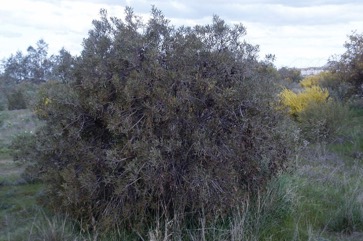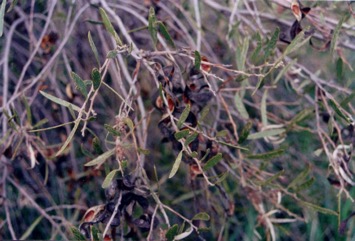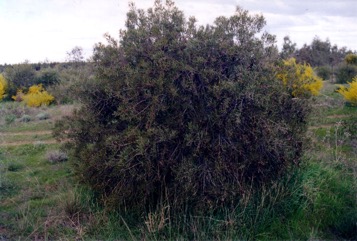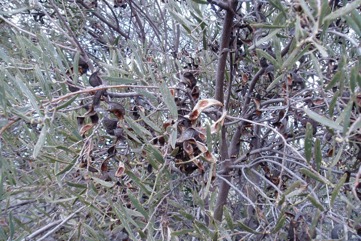Umbrella wattle, Umbrella acacia

It is a subtropical plant. It grows naturally in Australia south of 20°S latitude. It prefers light to medium soils. It needs an open sunny position. It is drought resistant. It is probably damaged by heavy frost. It is suited to alkaline soils.
Also known as:
Miljee, Wilpiya waltari
Edible Portion
- Seeds
Where does Umbrella wattle grow?
Found in: Australia
Notes: There are about 1,350 Acacia species. Over 1,000 occur in Australia. Also as Mimosaceae.
Growing Umbrella wattle, Umbrella acacia
Cultivation: It is grown from seed. The seed need treatment to break the hard seed coat. Normally this is by putting the seeds in very hot water and letting the water cool down overnight then planting the seeds immediately.
Edible Uses: The seed can be eaten raw. They are also ground to a paste.
Nutrition Info
per 100g edible portion| Edible Part | Energy (kcal) | Protein (g) | Iron (mg) | Vitamin A (ug) | Vitamin c (mg) | Zinc (mg) | % Water |
|---|---|---|---|---|---|---|---|
| Seed | 188 | 22.5 | - | - | - | - | 6.5 |
Umbrella wattle, Umbrella acacia Photos




References
Anon., 2003, Native Plants for the Fitzroy basin. Society for Growing Australian Plants Inc. (Rockhampton Branch)
Bircher, A. G. & Bircher, W. H., 2000, Encyclopedia of Fruit Trees and Edible Flowering Plants in Egypt and the Subtropics. AUC Press. p 4
Bodkin, F., 1991, Encyclopedia Botanica. Cornstalk publishing, p 28
Cherikoff V. & Isaacs, J., The Bush Food Handbook. How to gather, grow, process and cook Australian Wild Foods. Ti Tree Press, Australia p 42, 188
Cribb, A.B. & J.W., 1976, Wild Food in Australia, Fontana. p 103
Elliot, W.R., & Jones, D.L., 1982, Encyclopedia of Australian Plants suitable for cultivation. Vol 2. Lothian. p 92
Fragm. 4:5. 1863
Hall, N. et al, 1972, The Use of Trees and Shrubs in the Dry Country of Australia, AGPS, Canberra. p 348
Hunter, J.T., 2017, Is there a relationship between contemporary high Aboriginal plant resource locations and mapped vegetation communities? Cunninghamia 17:27-34. The Royal Botanic Garden Sydney. ISSN 2200 - 405X
ILDIS Legumes of the World http:www;ildis.org/Legume/Web
Lazarides, M. & Hince, B., 1993, Handbook of Economic Plants of Australia, CSIRO. p 5
Lister, P.R., P. Holford, T. Haigh, and D.A. Morrison, 1996, Acacia in Australia: Ethnobotany and potential food crop. p. 228-236. In: J. Janick (ed.), Progress in new crops. ASHS Press, Alexandria, VA.
Paczkowska, G . & Chapman, A.R., 2000, The Western Australian Flora. A Descriptive Catalogue. Western Australian Herbarium. p 318
Pennock, A., et al, Australian Dry-zone Acacias for Human Food: Proceedings of a Workshop.
Steenbeeke, Greg as part of the Plants Directory project. List of plant species from northern NSW that may be used as food plants p 1
Williams A. & Sides, T., 2008, Wiradjuri Plant Use in the Murrumbidgee Catchment. Murrumbidgee Catchment Management Authority. Wagga Wagga, p 15